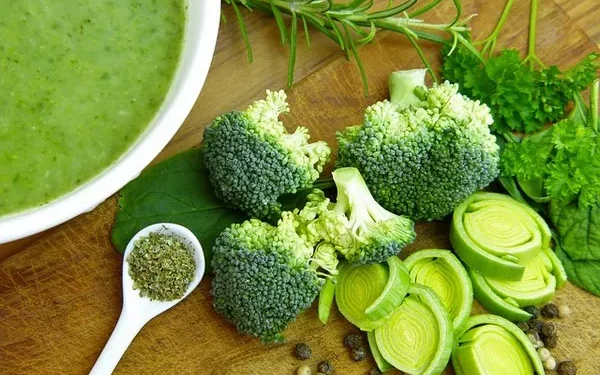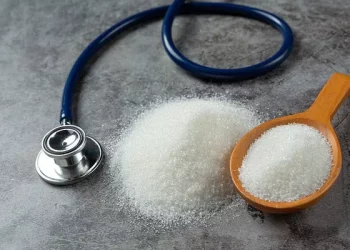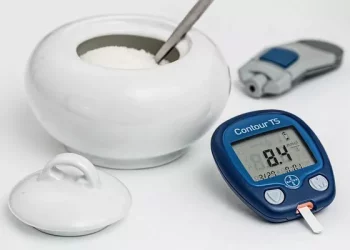Diabetes is a growing health concern worldwide, and its prevalence continues to rise with the increasing rates of obesity, sedentary lifestyles, and poor dietary habits. Type 2 diabetes, the most common form, is largely preventable through lifestyle changes, particularly diet. The foods you eat play a significant role in regulating your blood sugar levels, and adopting a diabetes-friendly diet can help prevent or manage the condition. This article explores six foods that have been shown to help prevent diabetes and improve overall health.
Understanding the Link Between Diet and Diabetes
Before delving into the specific foods that can help prevent diabetes, it’s important to understand the relationship between diet and the disease. Diabetes occurs when the body’s ability to regulate blood sugar (glucose) is impaired. This can be due to the body not producing enough insulin or because the insulin produced is not effective at moving glucose into the cells where it is needed for energy.
Insulin resistance, a key feature of type 2 diabetes, often develops gradually over time as the body becomes less responsive to insulin. This results in higher blood glucose levels, which, if not addressed, can lead to full-blown diabetes. However, the risk of developing diabetes can be reduced or even reversed with lifestyle changes, including adopting a healthy diet that supports better blood sugar control.
The right foods help regulate blood sugar levels, reduce inflammation, and support the body’s insulin sensitivity. The six foods discussed below have been identified through research as having protective effects against the onset of type 2 diabetes.
1. Leafy Greens
Leafy greens such as spinach, kale, and Swiss chard are among the healthiest foods you can consume. These vegetables are packed with nutrients, fiber, and antioxidants, all of which help regulate blood sugar levels.
Why Leafy Greens Help Prevent Diabetes
Low Glycemic Index: Leafy greens have a very low glycemic index (GI), which means they cause only a minimal increase in blood sugar after consumption. Foods with a low GI are digested slowly, leading to steady, controlled blood sugar levels.
Rich in Magnesium: Many leafy greens are rich in magnesium, a mineral that plays a vital role in regulating blood sugar levels. Studies have shown that people with higher magnesium intake are at a lower risk of developing diabetes.
High in Fiber: Fiber, particularly soluble fiber, slows down the absorption of sugar into the bloodstream, preventing spikes in blood glucose. Fiber also promotes better digestion and supports healthy weight management—another critical factor in diabetes prevention.
2. Nuts and Seeds
Nuts and seeds, such as almonds, walnuts, flaxseeds, chia seeds, and sunflower seeds, are often overlooked but are extremely beneficial for overall health. These nutrient-dense foods are packed with healthy fats, fiber, and protein, all of which contribute to better blood sugar control.
Why Nuts and Seeds Help Prevent Diabetes
Healthy Fats: Nuts and seeds contain monounsaturated and polyunsaturated fats, which help improve insulin sensitivity and regulate blood sugar levels. These fats also help reduce the risk of cardiovascular disease, which is a common complication of diabetes.
Rich in Fiber and Protein: The high fiber content in nuts and seeds helps slow the digestion and absorption of sugar, keeping blood glucose levels stable. Additionally, the protein in these foods can help reduce hunger and control appetite, making it easier to maintain a healthy weight.
Low Carbohydrate Content: Nuts and seeds are low in carbohydrates, making them an ideal food for preventing spikes in blood sugar. The balance of healthy fats, protein, and fiber in nuts and seeds makes them an excellent snack choice for diabetes prevention.
3. Berries
Berries, such as strawberries, blueberries, raspberries, and blackberries, are not only delicious but also rich in antioxidants and fiber, both of which contribute to better health and diabetes prevention.
Why Berries Help Prevent Diabetes
High Antioxidant Content: Berries are loaded with antioxidants like anthocyanins, which help reduce inflammation and oxidative stress in the body. Chronic inflammation is a key factor in the development of insulin resistance, and by reducing inflammation, berries may help prevent the onset of diabetes.
Low Glycemic Index: Like leafy greens, most berries have a low glycemic index, meaning they have a minimal impact on blood sugar levels. The high fiber content in berries also helps to slow sugar absorption and regulate blood glucose.
Rich in Vitamin C: Berries are an excellent source of vitamin C, which is important for immune function and overall health. Vitamin C also plays a role in improving insulin sensitivity, further supporting the prevention of diabetes.
4. Whole Grains
Unlike refined grains, whole grains such as oats, quinoa, barley, and brown rice retain their bran and germ, which means they are rich in fiber, vitamins, and minerals. Consuming whole grains instead of refined grains can have a profound impact on blood sugar control.
Why Whole Grains Help Prevent Diabetes
High Fiber Content: Whole grains are rich in both soluble and insoluble fiber, which slow down the digestion and absorption of carbohydrates, leading to slower increases in blood sugar levels. This helps prevent blood sugar spikes and improves long-term glucose control.
Lower Glycemic Index: Whole grains have a much lower glycemic index compared to refined grains, making them a healthier choice for blood sugar management. By choosing whole grains, individuals can reduce the risk of developing insulin resistance.
Nutrient-Rich: Whole grains are packed with essential nutrients such as magnesium, zinc, and B vitamins, all of which support healthy metabolism and blood sugar regulation. These nutrients help improve insulin sensitivity, which is key in preventing diabetes.
5. Legumes
Legumes, such as beans, lentils, chickpeas, and peas, are an excellent source of plant-based protein, fiber, and essential vitamins and minerals. They are versatile, affordable, and can be incorporated into a wide range of dishes.
Why Legumes Help Prevent Diabetes
High in Fiber and Protein: The fiber and protein content in legumes help regulate blood sugar by slowing the absorption of carbohydrates. Additionally, the protein in legumes helps keep you full and satisfied, preventing overeating and helping with weight management.
Low Glycemic Index: Most legumes have a low glycemic index, which means they cause only a slow, gradual rise in blood sugar levels. This makes them ideal for individuals looking to maintain stable blood glucose levels.
Rich in Nutrients: Legumes are an excellent source of magnesium, potassium, and folate, all of which contribute to healthy blood sugar regulation. Consuming legumes regularly has been linked to a reduced risk of developing type 2 diabetes.
6. Cinnamon
Cinnamon is a spice that not only adds flavor to foods but also offers several health benefits, particularly in terms of blood sugar control. It has been studied for its potential role in improving insulin sensitivity and reducing blood sugar levels.
Why Cinnamon Helps Prevent Diabetes
Improves Insulin Sensitivity: Cinnamon contains compounds that can improve insulin sensitivity, which helps the body use insulin more effectively and maintain normal blood sugar levels. Insulin resistance is one of the primary factors contributing to the development of type 2 diabetes, so improving insulin sensitivity can help prevent the disease.
Regulates Blood Sugar Levels: Studies have shown that cinnamon can help lower fasting blood glucose levels. This makes it a useful spice for individuals looking to prevent or manage prediabetes.
Rich in Antioxidants: Cinnamon is rich in antioxidants, which help reduce inflammation and oxidative stress. These factors are known to contribute to insulin resistance, so by reducing them, cinnamon can help prevent the onset of diabetes.
Putting It All Together: A Diabetes-Friendly Diet
Incorporating these six foods into a well-rounded, balanced diet is an effective way to prevent diabetes. However, it’s important to remember that no single food can prevent diabetes on its own. A comprehensive approach that includes regular physical activity, maintaining a healthy weight, and managing stress is essential for long-term health.
A diabetes-friendly diet should focus on whole, unprocessed foods that are high in fiber, rich in essential nutrients, and low in refined sugars and unhealthy fats. By making these dietary changes, along with other lifestyle modifications, individuals can significantly reduce their risk of developing type 2 diabetes and improve their overall health and well-being.
Conclusion
Preventing diabetes is within reach for most people through the adoption of a healthy diet and lifestyle. The six foods highlighted in this article—leafy greens, nuts and seeds, berries, whole grains, legumes, and cinnamon—are all excellent choices for supporting blood sugar regulation and improving insulin sensitivity. By incorporating these foods into your daily meals and making other health-conscious decisions, you can significantly lower your risk of developing type 2 diabetes and pave the way for a healthier, longer life.
While dietary changes alone may not prevent diabetes entirely, they are a crucial part of a holistic approach to diabetes prevention. Regular exercise, weight management, and stress reduction are equally important in reducing the risk of developing this chronic condition. By making these changes today, you are investing in a healthier future.
Related topics:
What Are the Food Items to Reduce Sugar?
























